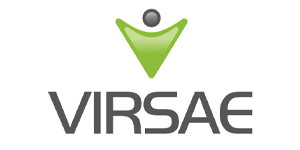It’s safe to say that the world of UC is becoming more complex.
You don’t just have phone calls to keep track of these days. Communication is happening on a much wider scale, covering everything from instant messaging to video.
A more complicated communication stack means that businesses can connect with their clients on more of the platforms they use. This often leads to better conversations, more meaningful buyer journeys, and bigger conversions. The only downside? There’s a lot more technology to keep track of.
Service management solutions in the UC landscape can help to reduce some of the stress that today’s businesses are under to keep their communication stack running smoothly. With a service management strategy, business leaders can provision new technology faster, track call quality, and prevent future issues.
We spoke to some of the market leaders from the UC service management market to learn more about where the industry is heading. Here are the highlights from our conversations with Nectar, Unify Square, Unimax, Virsae, and VOSS.
Concerning Service Management, what are the major challenges faced by business today?
Companies in the current communication landscape are struggling with a rising demand for complete visibility and control. As the workplace continues to evolve, and new technology appears on the cloud, the demand for service management solutions is growing.
Service management tools offer an insight into how employees work, and which business operations need to change to support the growth of the organisation. According to Frost and Sullivan, today’s companies are increasingly searching for a single pane-of-glass environment where they can keep track of all their technology.
We asked our experts what the major challenges companies are facing today look like in the context of Service Management.
 Tim Armstrong, Vice President of Product for Nectar:
Tim Armstrong, Vice President of Product for Nectar:
According to Nectar’s VP of Product, Tim Armstrong, the biggest challenge for companies considering service management right now, is the shift to working from home.
“As an industry, we have quickly shifted away from thinking about conference rooms and huddle spaces to now focusing almost entirely on end-users that are working from home networks. With that context, we see three categories of challenges.”
First, companies need to discover new ways of empowering users with the right hardware, software, and remote working practices. Secondly, management needs visibility in the form of usage reporting. Analytics help companies to understand what teams need to remain productive. “Finally, the third area is around support and operations. Enabling support teams with the tools to provide meaningful context to the challenges end-users are facing is especially challenging when users are remote.”
Scott Gode, Chief Product Marketing Officer for Unify Square:
Chief Product Marketing Officer of Unify Square, Scott Gode, also acknowledged the shift to working from home as a major challenge. The sudden move to the remote landscape has accelerate the shift to cloud transformations. IT teams are struggling to migrate systems while delivering the user support that employees and end-users need.
Another challenge is the rise of a hybrid balancing act. As IT starts to stabilize work from home strategies, the return to the office is beginning too. “Infrastructure to support the “new normal” of video conferencing established during the COVID WFH time necessitates a different and expanded set of IT service management best practices.”
The combination of accelerated collaboration tools and WFH solutions has also created a higher security risk, according to Unify Square. Companies need to ensure that their technology is properly protected.
 Phil Moen, President, and CEO for Unimax:
Phil Moen, President, and CEO for Unimax:
Phil Moen, the CEO and President of Unimax says that efficient service management is only as good as the technology on the back-end. “ITSM tools today are sometimes used as simple work ticket systems, but they could integrate the most complex workflows to make the services offered or the changes needed as human-free as possible, providing the best case for reduced costs.”
According to Phil, this is a challenge for the telecom space since the underlying tech is complicated. There needs to be a system that can receive requests and understand issues while providing interoperability opportunities. “So, the major challenge? Finding an intermediator system which turns offering complicated services into actually completing those requests them successfully.”
 Ian McCarthy, Director of UK and EMEA for Virsae:
Ian McCarthy, Director of UK and EMEA for Virsae:
Virsae’s Director for UK & EMEA, Ian McCarthy says that organisations today are under increased pressure to deliver incredible customer experiences. CX is a common concern for all businesses. However, the complexity of real-time communications can pose challenges to quality – particularly in the home working environment.
“Regardless of the location of agents and users, compliancy requirements must still be met. Were customers advised their call may be recorded? Was the recording captured? Were PCI and other regulatory compliance requirements met?”
Ian notes that processes need to remain efficient, and companies need to continue measuring quality. A company’s ability to deliver optimal customer experience in a fast-changing environment rests on the performance of the brand’s communication systems.
Mike Frayne, CEO of VOSS:
CEO of Voss, Mike Frayne says that many organisations usually deploy separate UC point solutions, which makes it harder to get a holistic view of the complete UC environment. Without a suite of tools for UC management, administrative tasks need to be managed manually. This is an exhausting and error-prone experience.
“Additionally, if your UC administration tools aren’t interconnected to your UC analytics and assurance tools – or indeed if there are no tools in place at all! – it will be even more difficult to analyse and troubleshoot faults, and impossible to apply corrective rules in the provisioning workflows to automatically correct those faults.”
Companies should be looking for ways to automatically respond when call quality falls, or a device stops working correctly, according to VOSS.
How can Service Management address those challenges?
The challenges of the unified communications space are constantly growing, particularly as conversations become more complex. As we move into the cloud and experiment more with things like work-from-home landscapes, companies are turning to service management for help with visibility and quality control.
Service Management solutions also play an important role in improving security and reliability within the communication stack – two of the biggest concerns for today’s businesses. We asked our Service Management experts for an insight into how the SM landscape can help companies to overcome some common challenges today.

Nectar’s Tim Armstrong told us that he’s been in the telecoms and UC industry for more than 25 years. Despite that, he’s never seen migrations and growth happen as quickly as they have in the last few months. Companies have had to move at an incredible pace to adopt new platforms and technologies. The pandemic pushed everyone to respond at record speed.
“During the fury of activity to roll out new platforms, many organisations simply did not have time to document the new environments in ways that enable support, asset tracking and adoption efforts. So one of the most critical areas that Service Management can address is around post-emergency audits and clean-up services.”
Armstrong also noted that although some companies were given unlimited funding to solve technology challenges, most weren’t in that position. Going forward, IT and business leaders will want to ensure that they can keep costs under control and support the environment that they’re going to be dealing with going forward. Optimisation of costs will be a valuable opportunity.
Unify Square Chief Product Marketing Officer, Scott Gode said that UC service management accomplishes a variety of things. First, the right technology gives organisations a real-time insight into their collaboration and UC systems. Secondly, it provides IT teams with a new set of tools and managed services to proactively deal with issues.
“From productivity to security, IT can access tangible, actionable insights regarding what’s occurring within their organisation in order to adapt processes, modify systems and networks, and generally focus on increases employee satisfaction”
Gode noted that the ideal service management product will be a one-two punch solution. There needs to be robust software tools to manage the new operations of the business. At the same time, there also has to be a selection of managed services available. These will help companies to leverage tools and add 24/7 oversight into business operations.

CEO of Unimax, Phil Moen said that companies need to address the challenge of finding the intermediator system that turns service requests into positive experiences. To do this, businesses need to turn to experts that understand how to deliver the right results.
“In other words, if the request has to do with changing a voicemail password or provisioning a complete collaboration user, turn to the experts in that area who know how to do this and depend on their systems to be that intermediator.”
There are hundreds of collaboration and telecom requests to manage in business. It’s imperative, because of this, that the intermediator system available is capable of understanding those requests. The system also needs to be able to make the right changes and take actions without human intervention.
“The selection of an intermediator vendor that understands those kinds of service requests should be based on the vendor’s experience and success with existing clients to achieve this sort of automation.”
Director of UK and EMEA for Virsae, Ian McCarthy said that organisations need to look for ways to get more out of their digital investments. The more they can leverage their tools, the more they can support and improve the service they have to offer. “Service management is the key, delivering entirely new levels of customer interaction insight in UC and contact centers.”
A cloud-native solution for UC service management may be particularly useful, according to Ian. This technology has the ability to capture valuable global data and apply AI and machine learning into the mix. The technology can then pinpoint problems and recommend resolutions. Companies can automate functions that would often take days and entire teams.
“Technically, real-time interactions, such as voice, challenge IP networks, which are inherently not real-time. When problems start to occur without an efficient service management platform, UC support teams are trying to make decisions based on partial information. They don’t have the visibility to understand the problem correctly, working on the symptoms rather than the cause.”

VOSS CEO, Mike Frayne said that VOSS is taking a unique approach to serving companies in the current landscape. The business offers a highly integrated UC suite, complete with everything businesses need. This includes fulfillment, assurance, reporting, analytics, accounting, and migration in the same single pane of glass.
VOSS UC service management solutions automate technologies from different vendors, using a secure and flexible web portal. The self-healing capacity of the technology is particularly groundbreaking. It helps organisations to pull data from findings, analyse faults, and overcome issues fast. “This enables identified issues to be automatically corrected (e.g. re-configuration of IP-PBX, UC applications, SIP trunk, or gateways, etc.).”
Frayne said that the key feature of the self-healing solution is the zero-touch fault-rectification in the UC platform.
“It significantly reduces downtime, increases overall service availability, and improves overall business continuity for critical business operations that involve communications”
What role can/does AI play in Service Management – now or in the future?
As we head into a new era of communication, companies are increasingly unlocking new opportunities with innovative technology. Tools like artificial intelligence can make it easier to collect data and transform it into actionable insights. Machine learning systems can predict and prevent problems in a call queue before they ever arise.
With all parts of the communication space now looking towards intelligent systems for help, we asked our experts about the implications of AI in service management.
Nectar’s Vice President of Product told us that the industry is well-primed to benefit from Artificial Intelligence. AI can deliver an unprecedented boost in efficiency, accuracy, and productivity. There are only so many end-user issues that standard tools can address before AI has to be part of the equation. A huge part of the end-user experience is left up to the actions of the end-user.
“The more intelligent we can make the endpoint clients and devices, the more insights we can offer to the end-user around how their own behavior and environment is contributing or, predictively, may contribute to the quality of experience they may have”
Tim noted that the path to intelligent strategies starts with expanding the available telemetry in the landscape. However, having the ability to apply AI and machine logic to the endpoint environment is a great solution too. “There is certainly a strong Service Management opportunity around that.”

Scott Gode told us that according to Gartner, 40% of all operations teams would be using AI within their monitoring toolset by 2023. AI’s role is becoming more crucial to the current landscape. IT teams are evolving to support unique new platforms like Slack, Zoom, and Microsoft Teams. As the workplace evolves, it’s challenging to keep up with demand.
AI helps to lessen the load on the IT team. “AI Ops has the potential to significantly up-level service management for UC platforms. Humans, no matter their UC experience or technical savvy, simply can’t adequately sift through and process the millions of data points proffered by UC systems. We are currently seeing its positive AI Ops impact for both end-users and IT.”
According to Gode, AI solutions improve the end-user experience significantly in the current landscape and reduce admin TCO with predictive data in monitoring and analytics. AI also identifies and reduces risks for collaboration security while detecting conferencing anomalies to reduce toll fraud.
Phil Moen, Unimax President, and CEO says there are many levels of artificial intelligence that can offer value in the process of receiving and completing service requests. Some of the technologies available today amplify this intelligence. Advancements in machine learning deliver the ability to recognise a pattern and anticipate the similar or next request.
“Advancements in natural language processing provide an understanding of what the intent of the human voice is in search of in the request.”
“By using these advancements, we can achieve the ability of using AI bots to understand (read or listen) to the service request and in turn to complete them”
For spoken requests like “Set a speed dial on my phone for the office”, AI could set a workflow off to understand where the speed dial should be set to, and what the cell phone number is.

Virsae Director, Ian McCarthy said that AI unlocks the true value available in raw data, creating knowledge and insight more rapidly than any group of humans. This knowledge can then lead to better business outcomes.
“Picture every single interaction – good and bad – being scrutinized by machine learning algorithms, then that data overlaid with an intelligent understanding of the supporting configuration. Understanding what drives the best interactions is as important as understanding what causes hiccups. By comparing the attributes of failed and successful interactions, AI continually assesses, and proactively responds to evolving situations, leveraging knowledge from successful resolutions in vast numbers of other scenarios.”
According to Ian, cloud-native, and AI-enabled UC service management platforms draw on information from thousands of deployments around the world. This means that the learning is a lot more comprehensive because of the vast number of interactions. This is something that can’t be achieved with standard enterprise-based solutions.
According to CEO of Voss, Mike Frayne, the UC industry’s AI has focused on areas like Net Bot technology for setting up and managing meetings, as well as improving contact centre call handling. Self-healing is a crucial step forward for the UC industry, as it brings the communication space in line with the tools that exist for software-defined networks.
“Historically, the complexity of UC and the traditional single-thread specialisation of UC management tools has meant that UC self-healing has not been possible. With VOSS’ full multi-function UC management suite (assurance, fulfilment, and analytics), the ability to design and create a self-healing AI solution for the UC Industry is now possible.”
The significant shift towards business transformation, where UC plays a crucial role and where AI is becoming a more critical component, according to Frayne. VOSS’s approach to self-healing capabilities mean that companies can significantly improve the robustness of their UC platform, and improve the transformation process.
What do you think about our UC Service Management round table? Do you agree with our experts? Let us know your thoughts in the comments below or join the conversation on social media.







